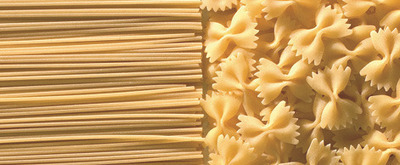To make this pasta the Cooperative Alce Nero uses an organically grown wheat variety with great historical and nutritious value.
Graziella Ra® is a type of wheat taken from an Egyptian tomb. It was brought to Italy towards the end of the 1970s by an archaeologist, who gave it to Paride Allegri, gardener for the Municipal Council of Reggio Emilia during that time. Ivo Totti in turn gave a handful to the members of the Alce Nero Cooperative, with precise instructions; if they would manage to grow it successfully, thay had to name it Graziella, after the archaeologist’s daughter, who died tragically during the Second World War.
But what does "RA" have to do with it? In Ancient Egypt, "RA" was the sun, to which we have also dedicated this variety, since it is the sun that provides the Earth with its essential heat and light every day.
After overcoming various problems, the cooperative managed to grow this wheat and to make the first pasta.
It is grown by by members in the hills of the Montefeltro area, in the province of Pesaro and Urbino. It is a wheat with a medium-long cycle and tall size, complete with large ears with long aristas. Yield does not exceed 15-20 quintals per hectare.
Tests performed at the University of Urbino (Department of Food Biotechnologies) have shown that this is a wheat variety that is particularly rich in protein, mineral salts and selenium, a powerful antioxidant with an effective action against free radicals, which are responsible for many human diseases.
Another important characteristic of this grain is that since it has not been subjected to genetic improvement, it is better suited than other varieties to be introduced into the diets of people who suffer food allergies. However, like all wheats, this variety contains gluten and is therefore unsuitable for people affected by celiac disease.
Montebello pasta made using 100% Graziella Ra® semolina is bronze drawn and dried at low temperatures for very long periods (approximately 26 hours for long pasta and 10 hours for short pasta) to preserve all of the nutrients and sensory qualities of the raw material in the finished product.
Via Mariano Pallottini



 Your new post is loading...
Your new post is loading...







